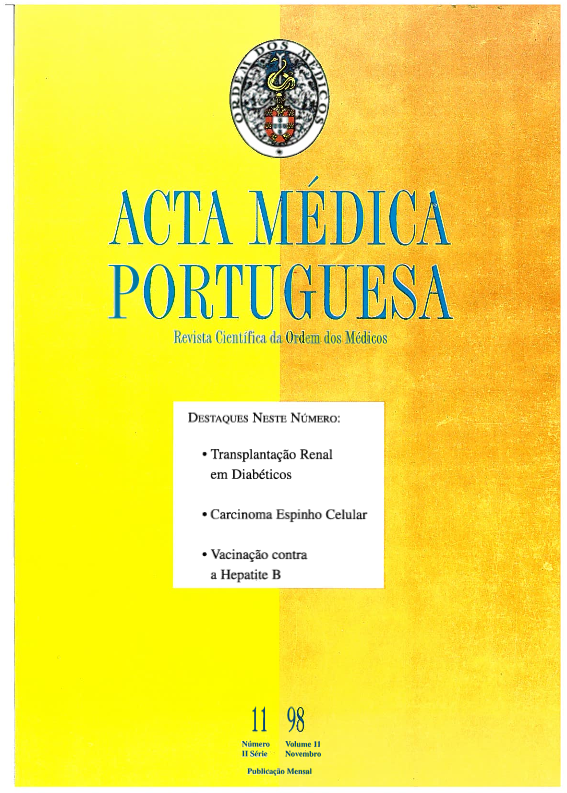Evolution in the management of splenic trauma. Retrospective study in children.
DOI:
https://doi.org/10.20344/amp.2347Abstract
The treatment of blunt splenic lesions had changed in the last years with an increasing trend to conservative management. In the absence of national surveys, this paper is aimed to evaluate the results of this therapeutic approach in a group of Portuguese children.Patients with blunt splenic lesions, admitted over a period of 7 years, (n = 54) were retrospectively analysed. A group submitted to surgical treatment 'ab initio' (group A, from 1990 to 1992 incl.) was compared with a group managed by a conservative approach (group B, from 1993 to 1996 inclusive). Age, sex, associated lesions, treatment, need of a blood transfusion and length of hospital stay were studied.The frequency of splenic lesions was relatively stable (6 to 10 years) in both periods. Group A (n = 24) was similar to group B (n = 30) regarding gender and age. In group A, 23 (97%) splenectomies were performed. In group B, only six (20%) children underwent laparotomy and 4 (13%) of them were submitted to splenectomy (A vs. B, p < 0.001). The need of a blood transfusion was similar in the two groups and so were the associated lesions. The great majority of transfused children presented associated lesions (10/11, 91%). In group B, associated lesions did not significantly alter the effectiveness of the conservative treatment. Hospital stay was significantly longer in group B (B vs. A: 12.5 +/- 2.5 vs. 9.8 +/- 1.8, p = 0.017).The conservative approach was viable in the great majority of patients with blunt splenic lesions, resulting in a drastic reduction in splenectomies. The need for transfusions did not increase, but the length of hospital stay increased. These results are concordant with other series from major centres, justifying this approach and constituting the challenge of its application in adults.Downloads
Downloads
How to Cite
Issue
Section
License
All the articles published in the AMP are open access and comply with the requirements of funding agencies or academic institutions. The AMP is governed by the terms of the Creative Commons ‘Attribution – Non-Commercial Use - (CC-BY-NC)’ license, regarding the use by third parties.
It is the author’s responsibility to obtain approval for the reproduction of figures, tables, etc. from other publications.
Upon acceptance of an article for publication, the authors will be asked to complete the ICMJE “Copyright Liability and Copyright Sharing Statement “(http://www.actamedicaportuguesa.com/info/AMP-NormasPublicacao.pdf) and the “Declaration of Potential Conflicts of Interest” (http:// www.icmje.org/conflicts-of-interest). An e-mail will be sent to the corresponding author to acknowledge receipt of the manuscript.
After publication, the authors are authorised to make their articles available in repositories of their institutions of origin, as long as they always mention where they were published and according to the Creative Commons license.









